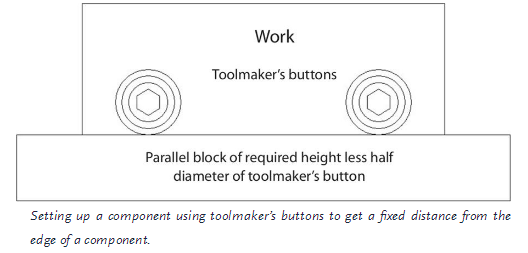cnc turned parts-Setting up the faceplate using the tailstock
To fit them to the component to be bored, mark out, drill and tap holes in the approximate positions where the holes are needed. If you need a pair of parallel holes, place the component on a surface plate, loosely fit the buttons and push them down onto a parallel or similar block of the correct thickness and nip the screws up. The spacer should be smaller than required by half the diameter of a button.
If the holes need to be a certain distance apart, use a spacer of the correct size between the buttons. (Remember to make the spacer smaller by one diameter of the button.) Setting up a component using toolmaker’s buttons to get a fixed distance from the edge of a component.
There are lots of different ways to set the spacing of buttons. It is mainly a matter of common sense.
Castings and flat components can be bolted to the faceplate for machining. A typical example of a flat component is an eccentric strap. This type of component is usually made of a component that is cut in half and bolted back together. A hole
is then bored in it, on the centre line, to fit the eccentric. This type of component is often difficult to hold in the lathe chuck and is prone to distortion. Castings are often too large to fit into a lathe chuck and so the faceplate is called on to
undertake the work. A casting can often be bolted directly to the faceplate to facil- itate easy machining.
